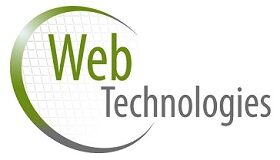Employee Monitoring: What Employers Need to Know
In today’s digitized work environment, employee monitoring has become a prevalent practice among employers. The increasing reliance on technology, remote work arrangements, and the need for data security have prompted organizations to implement monitoring systems to ensure productivity, compliance, and data protection. While employee monitoring can offer several benefits, it also raises important considerations to maintain a balance between organizational interests and employee privacy. Let’s explore what employers should consider when implementing employee monitoring practices in this informative article.

Employee Monitoring: What Employers Need to Know
Clearly Define Monitoring Objectives
Before implementing any monitoring system, employers must establish clear and well-defined objectives. Keep in mind European supervisory authority (WP29) notes. Whether it’s to improve productivity, ensure data security, or comply with industry regulations, understanding the purpose of monitoring will help align practices with the organization’s goals.
Inform Employees About Monitoring Practices
Transparency is key when it comes to employee monitoring. Employers should inform their employees about the monitoring practices being implemented. Providing clear and explicit information about the types of monitoring, data collected, and how it will be used fosters trust and ensures compliance with privacy laws.
Comply with Data Protection and Privacy Laws
Employers must be well-versed in relevant data protection and privacy laws to ensure compliance. Different jurisdictions have varying regulations concerning employee monitoring, and it is essential to adhere to these laws to avoid legal repercussions.
Limit Monitoring to Work-Related Activities
To respect employee privacy, employers should restrict monitoring to work-related activities only. Monitoring personal communications, such as personal emails or private messages, can be invasive and may lead to legal and ethical issues.
Minimize Data Collection and Retention
Employers should practice data minimization, collecting only the necessary information for monitoring purposes. Additionally, data retention should be limited to what is required for legal or operational purposes to prevent unnecessary storage of sensitive information.
Use Anonymized Data for Analysis
When analyzing monitoring data for productivity or performance insights, consider using anonymized data to protect individual employee identities. This approach ensures that individual privacy is maintained while still benefiting from aggregated data trends.
Focus on Cybersecurity
Employee monitoring systems may store sensitive data related to employee activities. Employers must prioritize cybersecurity measures to safeguard this information from unauthorized access and potential data breaches.
Offer Employee Training and Support
To ensure employees understand the reasons and benefits of monitoring, provide comprehensive training and support. Educating employees about monitoring practices and addressing any concerns they may have can alleviate anxieties and foster a positive work environment.
Provide an Option for Employee Feedback
Encourage open communication by providing a channel for employees to express their opinions, concerns, or feedback regarding monitoring practices. Taking employees’ perspectives into account can lead to more balanced and respectful monitoring practices.
Regularly Review and Update Monitoring Policies
Employee monitoring practices should be subject to periodic review and assessment. As the workplace evolves and new technologies emerge, monitoring policies should be updated to align with changing needs and regulations. The GDPR monitoring employees requirement must be followed.
Conclusion
Employee monitoring, when approached with transparency, respect for privacy, and adherence to laws, can offer significant benefits to both employers and employees. Striving for minimal data collection, cybersecurity, and employee feedback also contribute to a positive monitoring environment that fosters trust and productivity. As technology continues to shape the modern workplace, employers must consider these factors to ensure responsible and effective employee monitoring practices.
